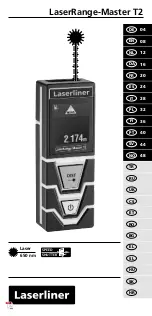
12-94 Instrument Control Library
Series 2600 System SourceMeters Reference Manual
2600S-901-01 Rev. A / May 2006
Return to
status
function and attributes
The following provides a brief overview of the status model. Details on the status
model are provided in
of this manual.
Status register sets
A typical status register set is made up of a condition register, an event register
and an event enable register (many also have negative and positive transition reg-
isters). A condition register is a read-only register that constantly updates to
reflect the present operating conditions of the instrument. When an event occurs,
the appropriate event register bit sets to 1. The bit remains latched to 1 until the
register is reset. When an event register bit is set and its corresponding enable bit
is set (as programmed by the user), the output (summary) of the register will set to
1, which in turn sets another bit in a lower-level register, and ultimately sets the
summary bit of the Status Byte Register.
Negative and positive transition registers
•
Negative-transition register (NTR)
– When a bit in an NTR register is set
by the user, the corresponding bit in the event register will set when the
corresponding bit in the condition register transitions from 1 to 0.
•
Positive-transition register (PTR)
– When a bit in a PTR register is set by
the user, the corresponding bit in the event register will set when the
corresponding bit in the condition register transitions from 0 to 1.
Status byte and SRQ
The Status Byte Register receives the summary bits of the five status register sets
and two queues. The register sets and queues monitor the various instrument
events. When an enabled event occurs, it sets a summary bit in the Status Byte
Register. When a summary bit of the Status Byte is set and its corresponding
enable bit is set (as programmed by the user), the RQS/MSS bit will set to indicate
that an SRQ has occurred, and the GPIB SRQ line will be asserted.
Summary of Contents for SourceMeter 2600 Series
Page 575: ...AppendixF DisplayCharacterCodes Appendix F topics Introduction page F 2...
Page 592: ......
Page 593: ......
















































